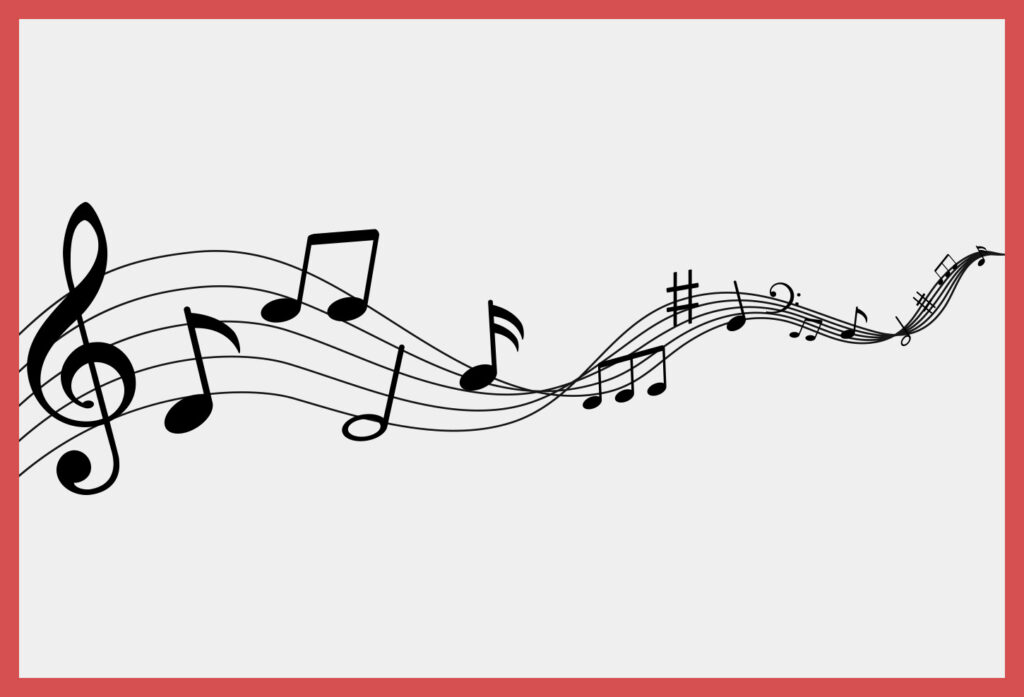What is a melody?
A melody is a sequence of musical notes that have a recognizable and appealing structure. Melodies can be simple or complex, and are often the main feature of a song that stays with the listener. They are defined by pitch and duration, tempo, rhythmic structure, and often by accompanying harmony.
Melodies can be found in all kinds of music all over the world. In songs with vocals, the singer usually sings the main melody of the song. In songs without vocals-such as classical music-another instrument (usually a high-pitched instrument like the violin or flute) plays the main melody.
In music theory, there are many concepts and techniques for constructing and analyzing melodies, such as scales, Intervals and Chords. These elements help to make a melody interesting, emotionally appealing, and often recognizable - because a melody is only good if it stays in the listener's memory.
However, knowledge of music theory is not necessary to compose good melodies-some people have a natural ability to do so.Knowledge of music theory, however, can only be an advantage.
What is the structure of a melody?
A melody is more than just a random sequence of notes - it has a structure and follows certain musical principles.
Pitch and intervals
Pitch is the frequency of a note, and intervals are the distances between notes. In a melody, the notes usually move in steps or leaps on a scale. The choice of intervals can greatly affect the emotional quality of the melody.
For example: If I compose a melody with a lot of tritone intervals, it sounds tense and frightening. But if I compose it with lots of major thirds and perfect fifths, it sounds happy.
Rhythm
The rhythm of a melody refers to the duration and timing of each note and rest. Rhythm can add momentum, tension, or relaxation to a piece of music. A complex rhythm can make a melody more interesting, while a simple rhythm makes it easy to remember.
The tempo also has a big influence on the melody: a slow tempo makes the melody calm and relaxed, while a fast tempo can make the melody sound motivating or hectic.
Phrasing
Melodies are often divided into phrases, which function much like sentences in language. A phrase is a musical idea that often ends with a breath or pause. Several phrases can be combined to form a larger musical section, such as a theme or motif.
Repetition and variation
Repetition is an important element in melodies because it helps the listener to recognize and remember the melody. Variation, on the other hand, keeps the melody interesting. By changing some elements, such as rhythm or intervals, a melody can be repeated but still kept exciting.
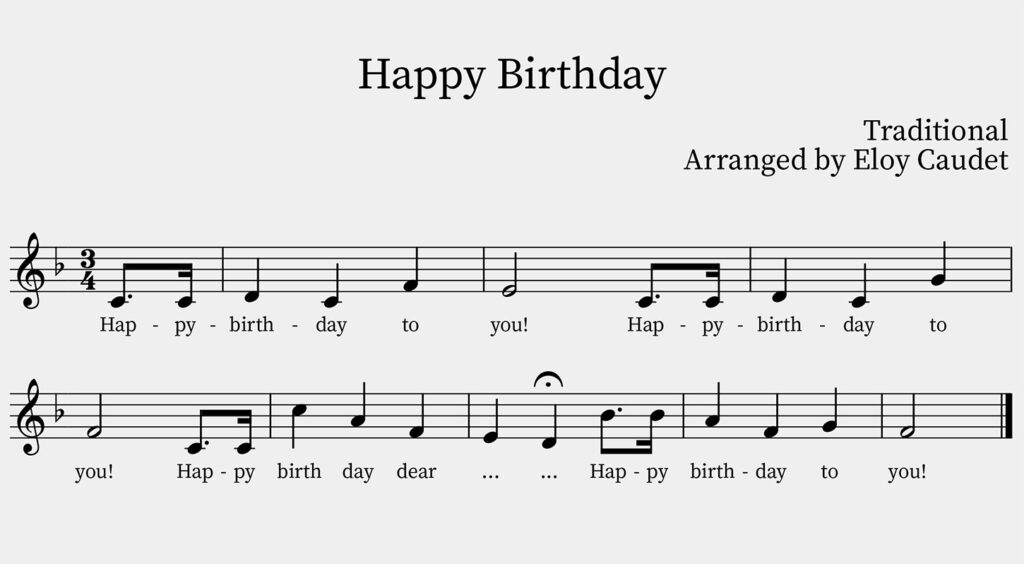
Types of melodies
The categorization of melodies can vary according to musical context, style, or method of analysis, but they can be divided into 2 main categories:
Instrumental melodies
- Theme melodies: They occur frequently in modern and classical compositions and in film music. They are characteristic and often the recognizable main element of a piece of music.
- Contrapuntal melodies: Several melodies are played simultaneously and together form a more complex texture. Commonly found in baroque music and jazz.
- Ostinato melodies: A constantly repeating musical phrase or melody, often in the bass range, over which other musical elements may vary.
- Improvised melodies: They are found in jazz and in some forms of traditional music, where the melody arises spontaneously in the moment.
- Ornamental/virtuoso melodies: They are technically demanding and showcase the musician's ability. They are often found in solo recitals and classical music.
Vocal melodies
- Verse melodies: These melodies are repeated for each verse of the lyrics. They are often simple and catchy.
- Chorus melodies: They are especially common in pop music and form the climax of a song that is repeated several times.
- Composed melodies: This type of melody is constantly changing and rarely repeated. They are especially common in classical music and some forms of experimental music.
- Call-and-response tunes: Characteristic of many forms of folk music, gospel, and blues, in which a "call" phrase is followed by a "response" phrase.
- Declamatory melodies: Common in operas, musicals, and some forms of popular music, where the melody follows the natural speech melody to tell a story or express a feeling.
Tips for composing melodies
When you compose a melody, you are trying to take the listener on an emotional journey - ultimately, you are telling a story through music. While there is no magic formula for composing great melodies ( otherwise we would all have lots of Grammys), there are a few tips that professional composers use time and time again.
- Understanding the scale and key: Choose a key and scale that reflect the emotional tone of the song. If your song is sad or melancholy, choose minor keys. However, if you want to compose a motivational or happy song, major keys are more appropriate.
- Just start: Start with a simple motif or phrase as a foundation. Later, you can build on this and make the melody more complex step by step.
- Form phrases: Think of a melody as a series of phrases, with a beginning, a development, and an end. The tension should rise and fall so that the listener does not get bored.
- Repetition and variation: Make the melody memorable through repetition, but keep it interesting with small variations.
- Rhythm: Use an interesting rhythm to make the melody come alive. Experiment a lot with the same notes but different rhythms to find the perfect rhythm.
- Harmonious support: Experiment with different accompaniment chords to enhance or change the emotional impact of the melody.
- Experiment and edit: Don't be afraid to create and revise different versions of a melody.
- Get feedback: Ask other musicians or friends what they think of your melody. Often our judgment becomes clouded when we have been working on a composition for a long time.
Known examples
Throughout human history, many songs have been composed and many melodies have been created, but some are so distinctive and good that most people know them. Of course, each listener's personal sensibilities are different, and melodies that please one person may not please everyone else. But there are melodies that are simply universally good and that most people find good.
Here are some examples:
Eleanor Rigby - The Beatles
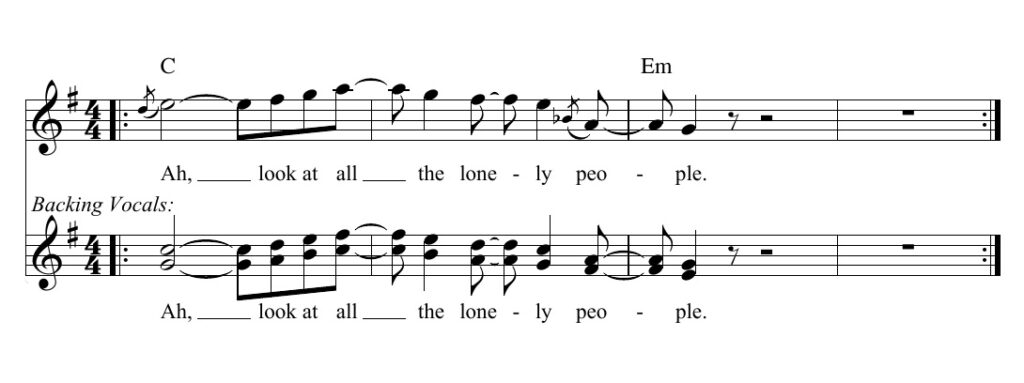
This popular Beatles song has a melancholy sound, which is achieved by the key of E minor. Although the key is E minor, the song begins in C major, the sixth degree of this key. This is very unusual and gives the feeling of being in the middle of the song.
Star Wars Imperial March
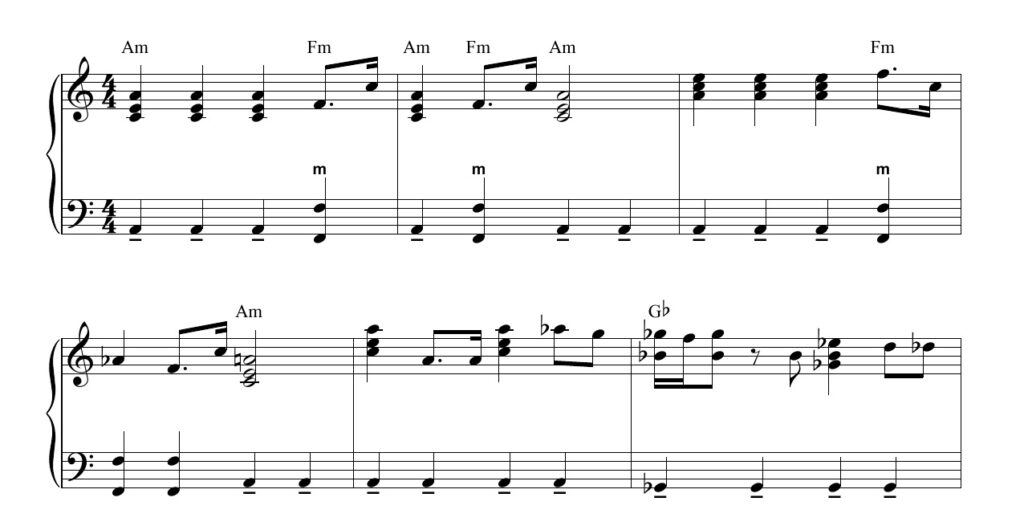
The movie music of Star Wars, which always begins with the appearance of the villain Darth Vader, conveys a feeling of tension and fear. This is achieved on the one hand by the minor key (A minor), but also by the many chromatic steps (small seconds: 1 semitone apart). This creates a lot of tension and a feeling of instability, which serves its purpose (the villain of the movie is to be perceived as such) excellently.
Hallelujah
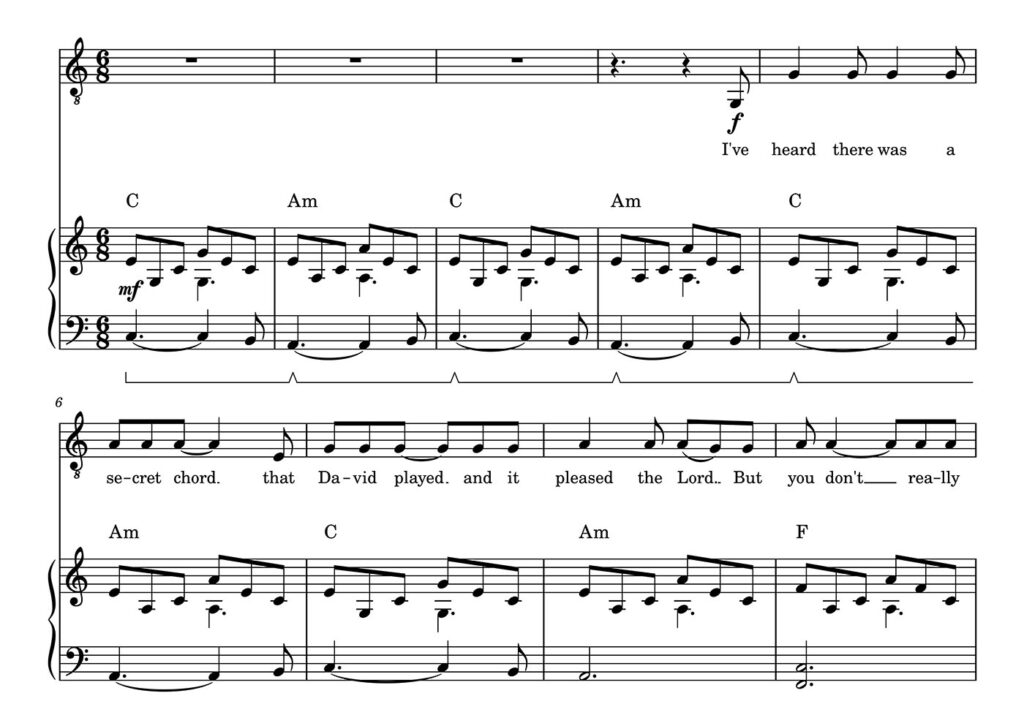
This world-famous melody is a perfect example of how a simple harmony and well-chosen notes can become one of the most famous songs. The chords at the beginning alternate between C major, the tonic, and A minor, the minor parallel. This changes the harmony relatively little, as the two chords of the cadence sound very similar. In the chorus, the chords alternate between major and minor, creating a half-melancholy, half-hopeful mood.
The sung melody always stays in the C major scale and has no "crooked" notes outside the scale, so it sounds very "pure" and "perfect". It is simple but very effective and instantly memorable.
Conclusion
In the end, you are very free to compose melodies. With a little experience and practice, it comes naturally, and you don't have to think so much about harmonies because you internalize the concepts over time and apply them unconsciously. So you can let your creativity flow!





